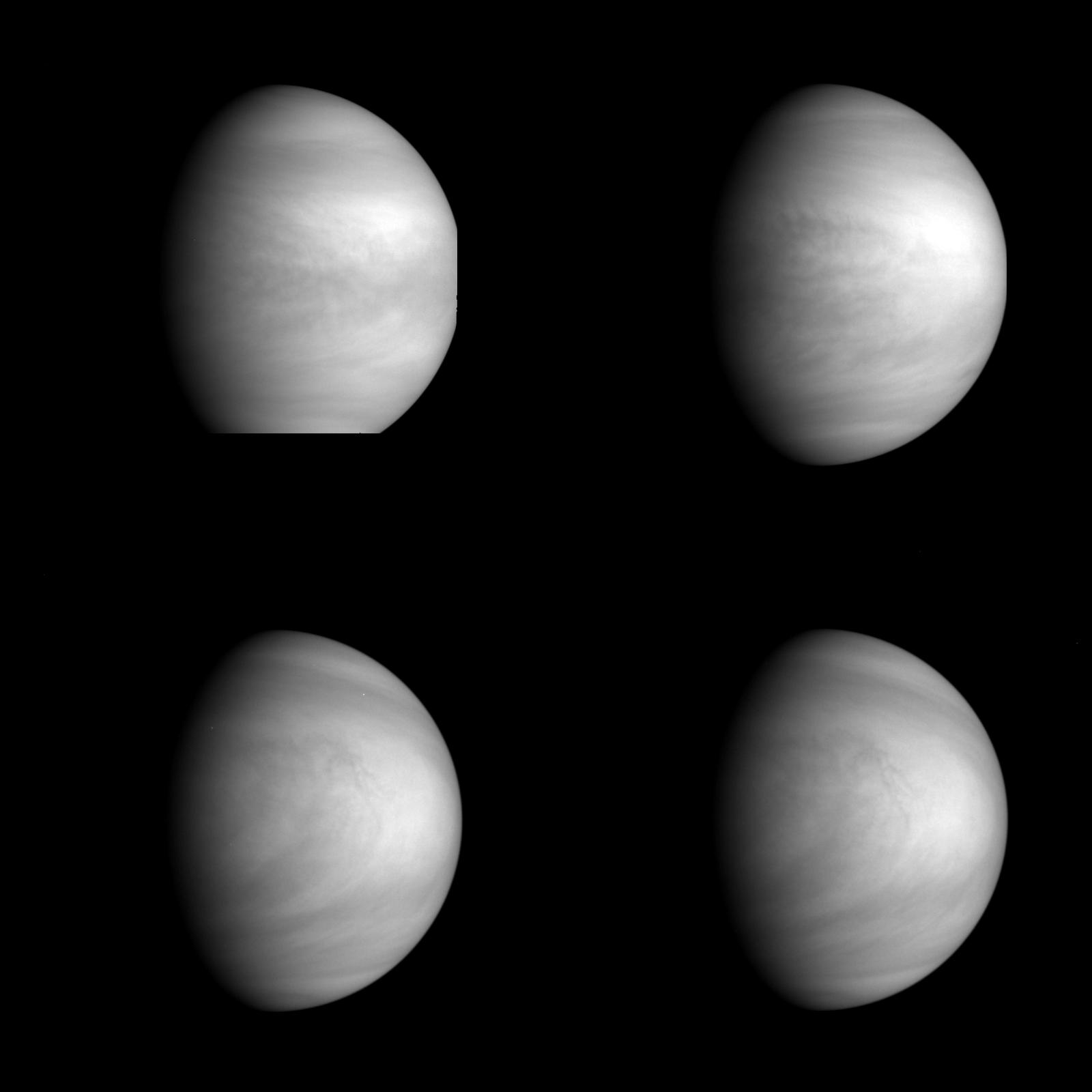Venus

Image courtesy Nasa
Diameter: 12092 Kilometers
Mass: 0.815 of Earths
Surface temperature: 460 degrees Celcius
Orbit around sun: 224.7 days
Moons: 0
Named after the Roman God of Love. It has been thought of as one of the most important heavenly bodies for thousands of years owing to its brightness which is apparant magnitude -4.6. When viewing Venus some kind of light filter is recommended as the brightness of the object just makes Venus pure white in telescopes. Only when blocking a lot of the intensity can any detail be seen on the surface. Colour filters can also help to show some of the details.
The surface below the atmosphere shows little sign of meteor strikes but plenty of volcanic and tectonic activity. This indicates that the surface is newer rather than older when compared to other bodies such as the Moon and Mercury. It is estimated that the surface age of Venus is between 300 and 600 million years old.
| Venus in other languages:- |
| Cebuano: | venus |
| Chinese: | jīnxīng 金星 |
| French: | vénus |
| German: | f venus |
| Greek: | Αφροδίτη |
| Indonesian: | venus |
| Italian: | m venere |
| Japanese: | kinsei 金星 |
| Nederlands: | c venus |
| Norwegian: | venus |
| Polish: | m wenus |
| Portuguese: | f vênus |
| Spanish: | m venus |
| Tagalog: | venus |
| Turkish: | venüs |